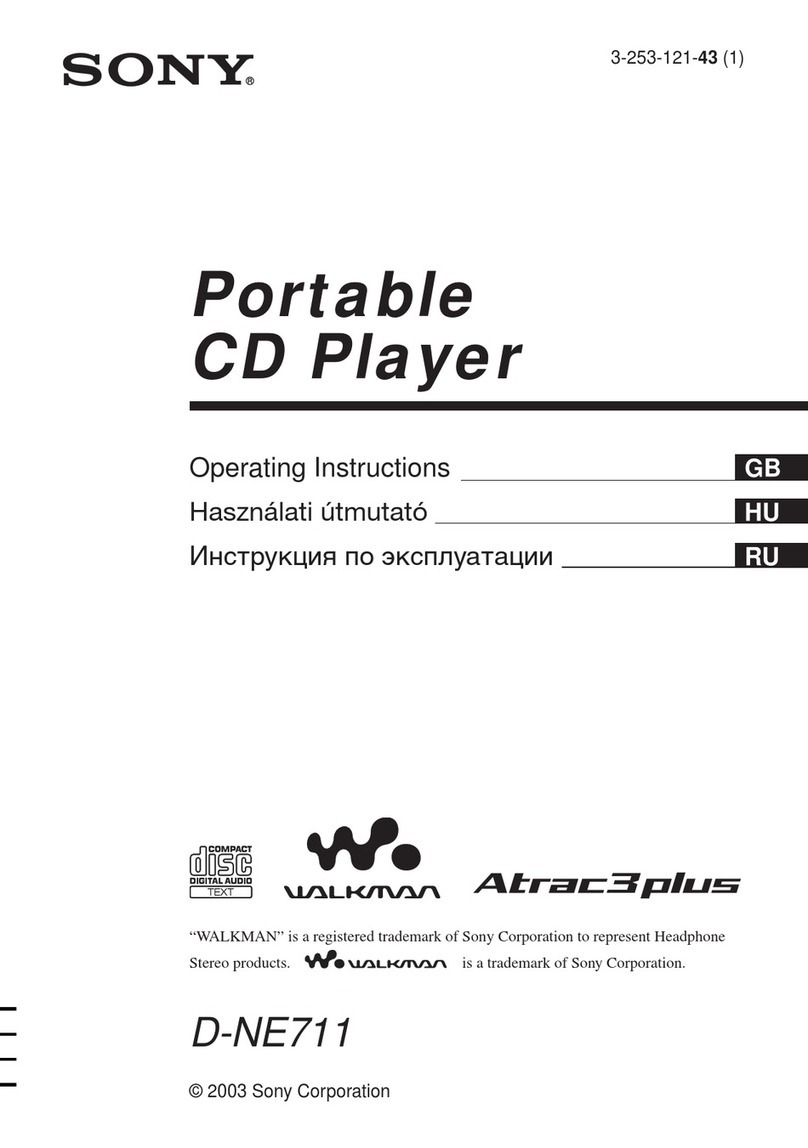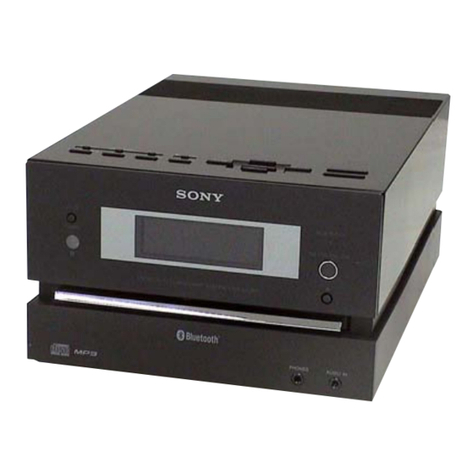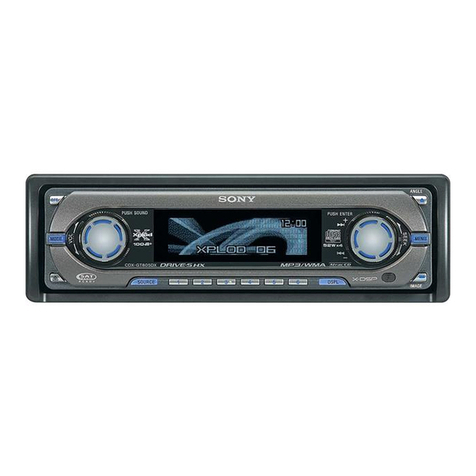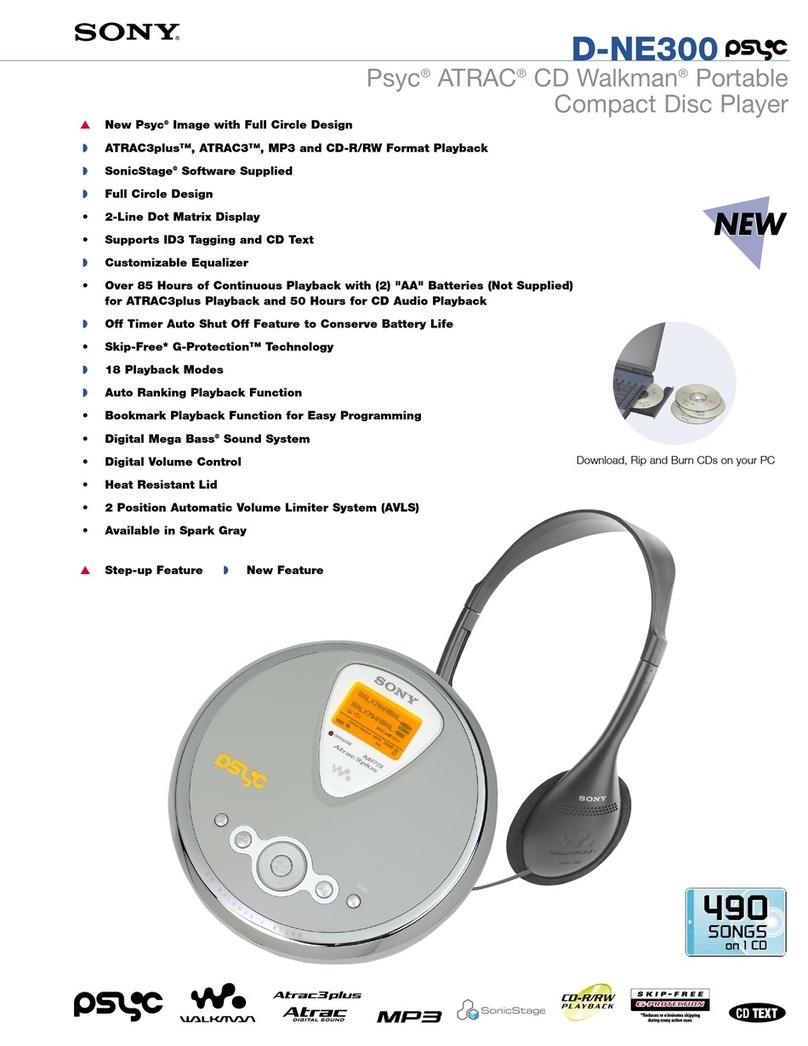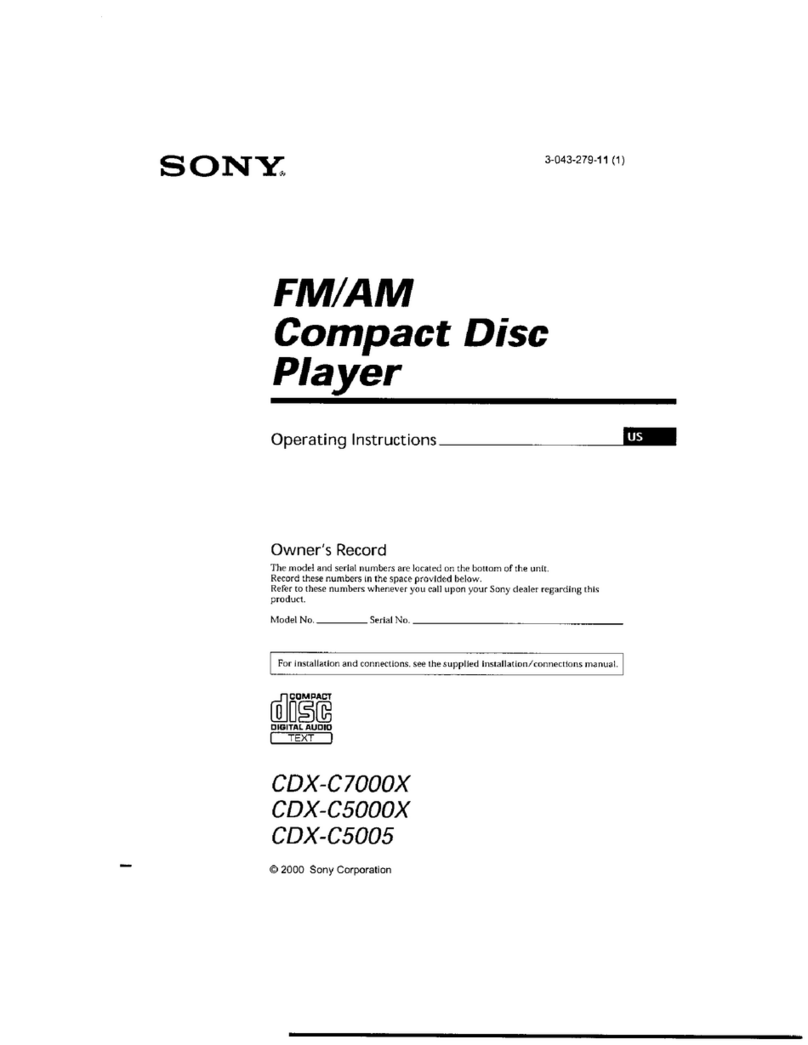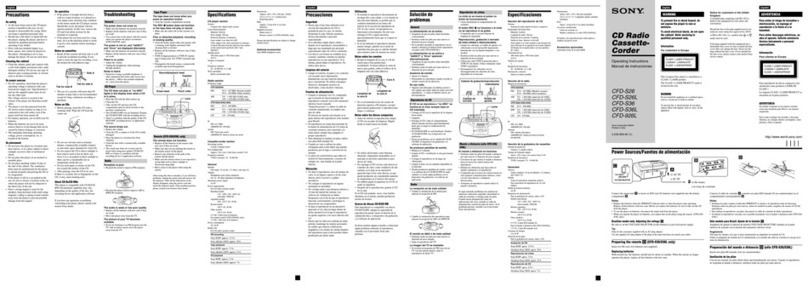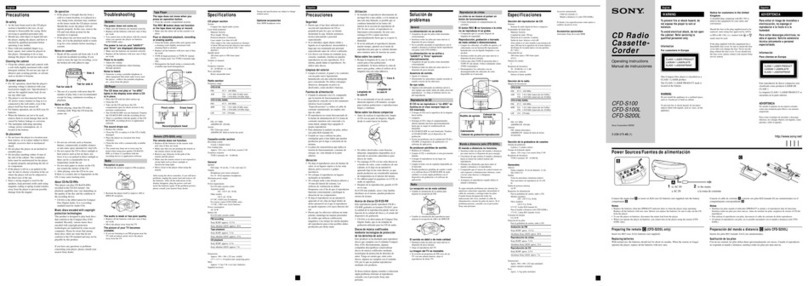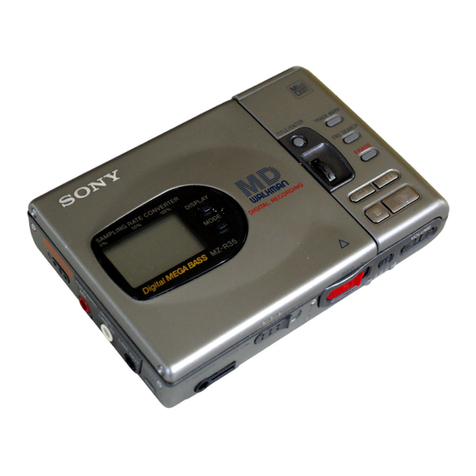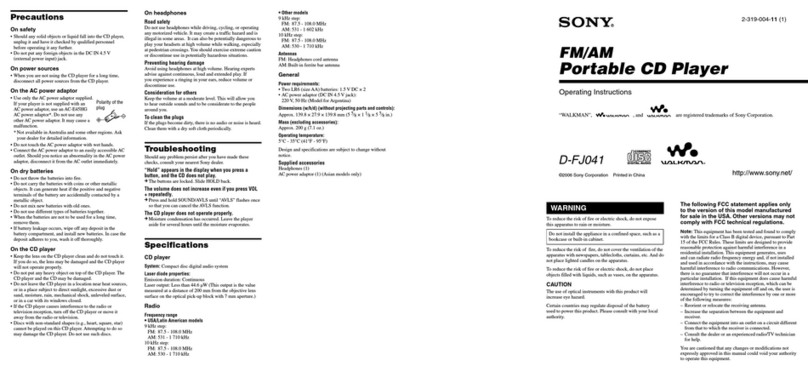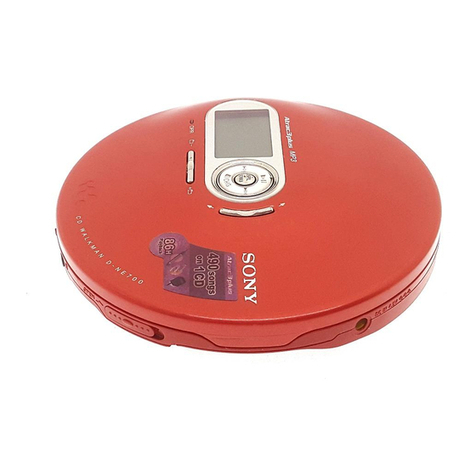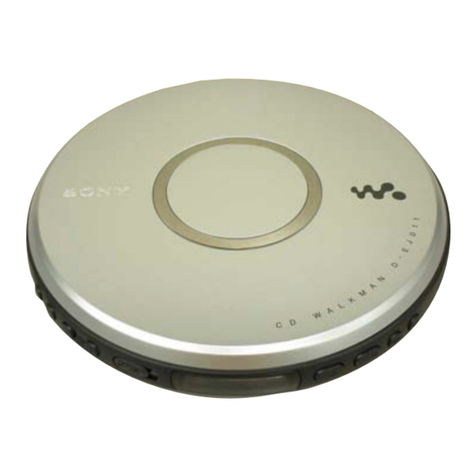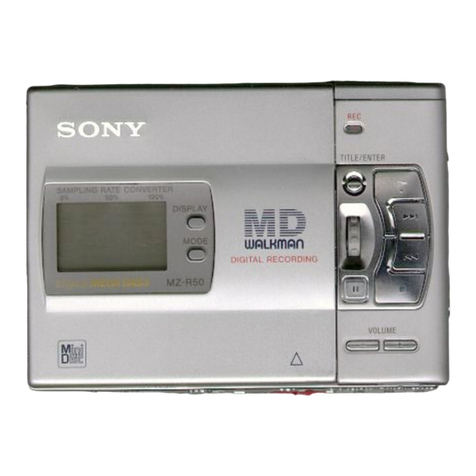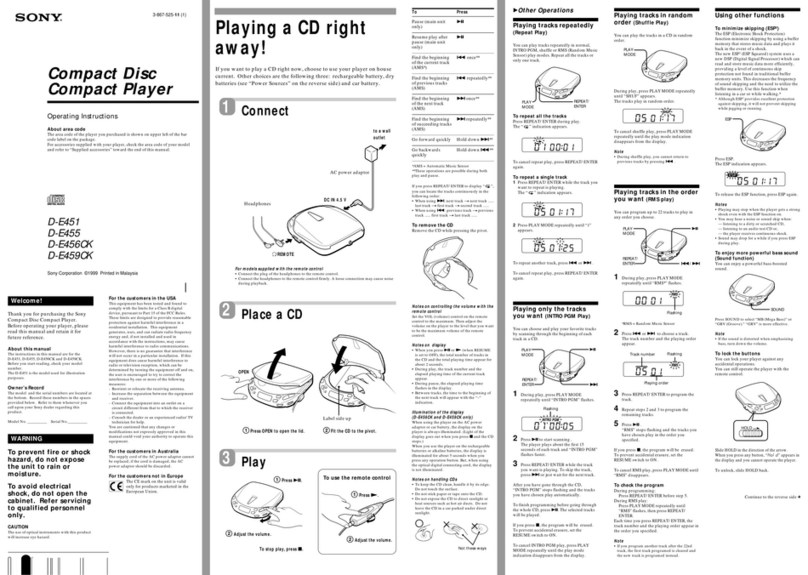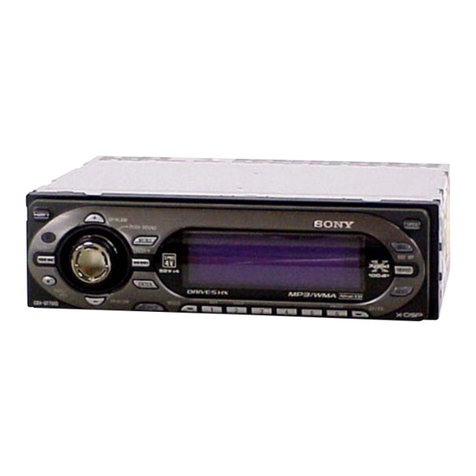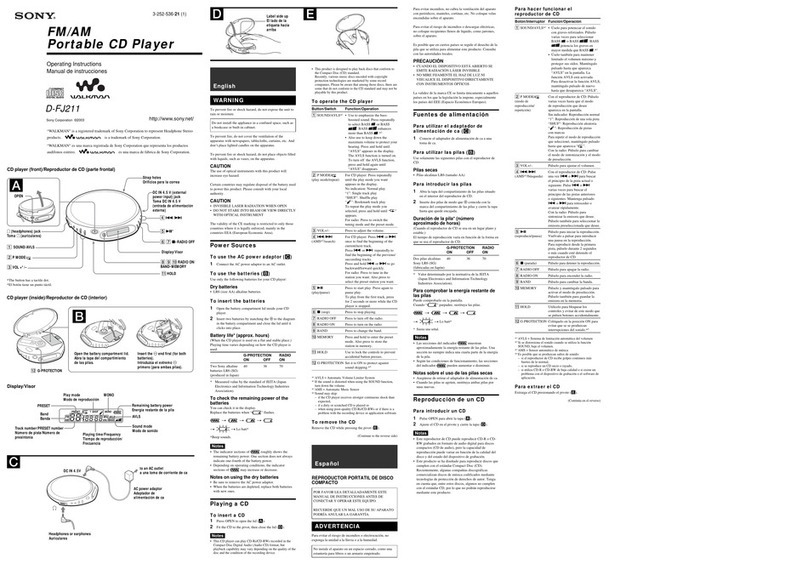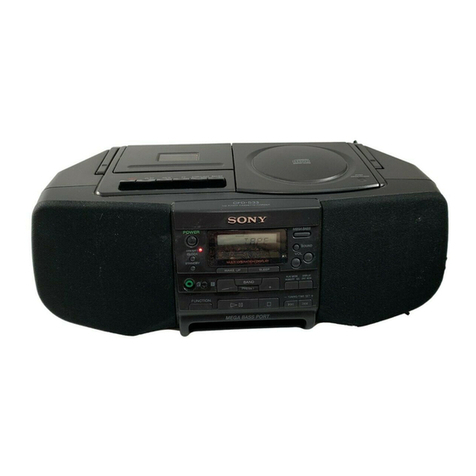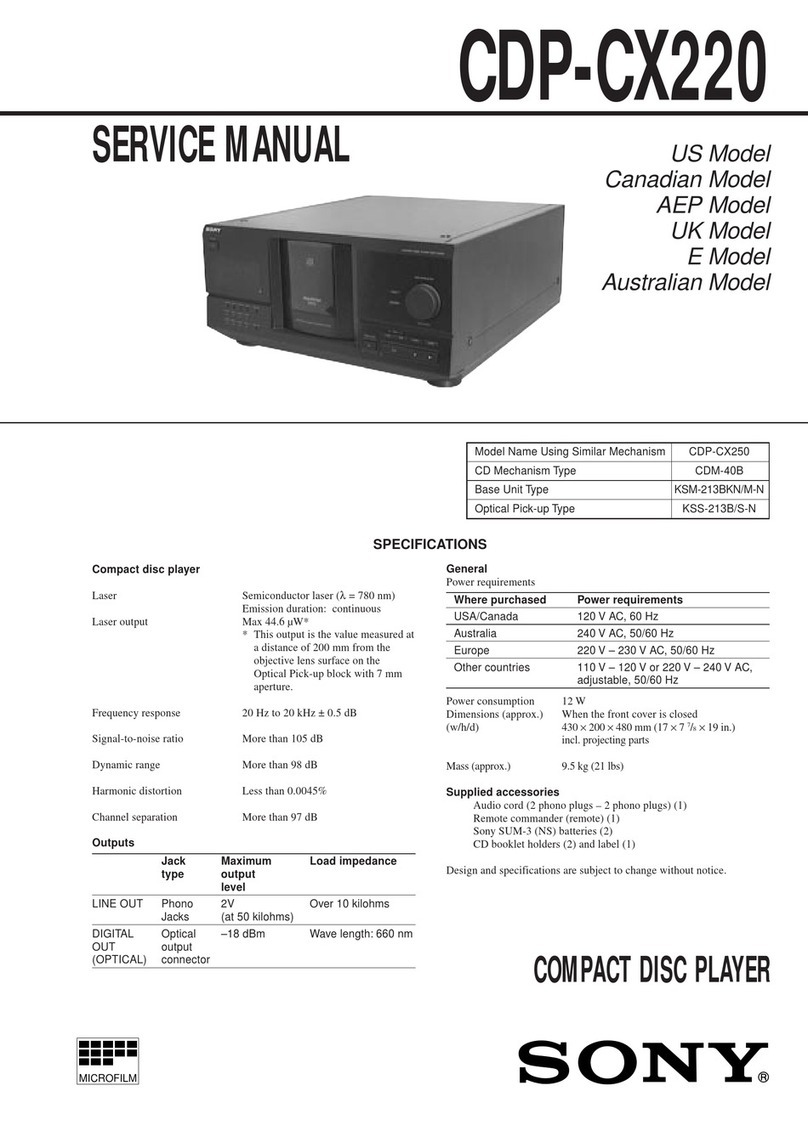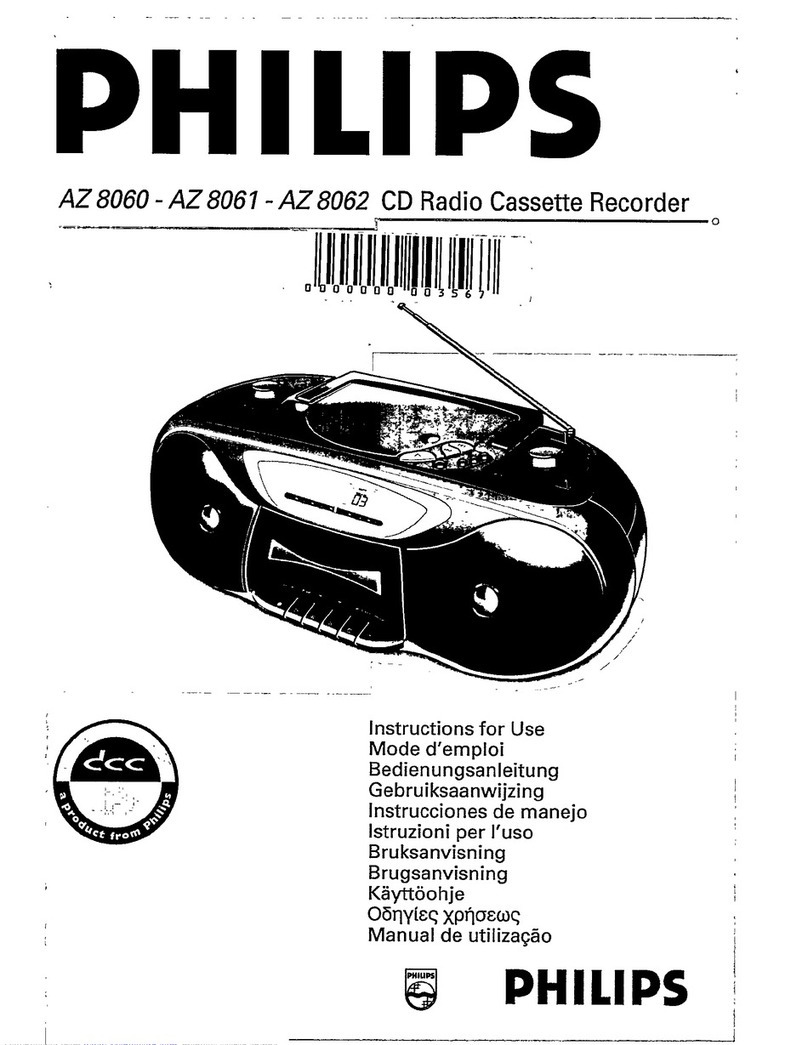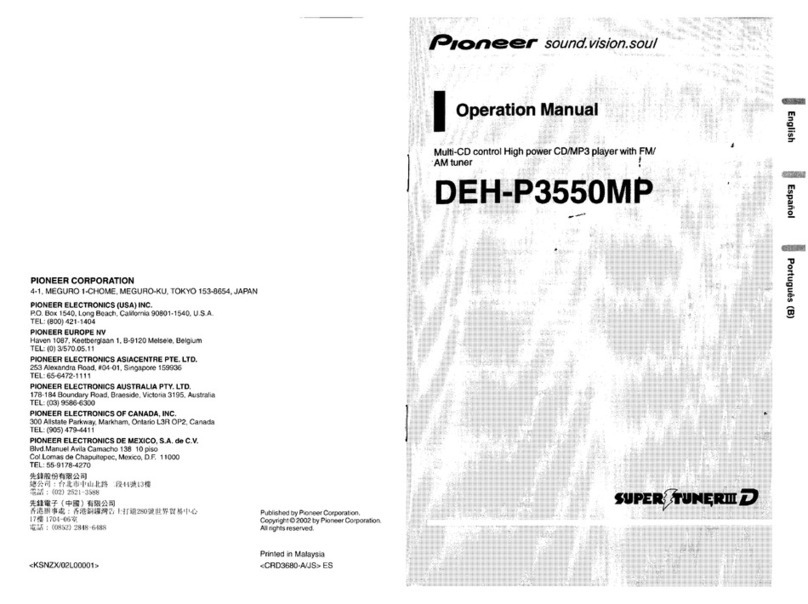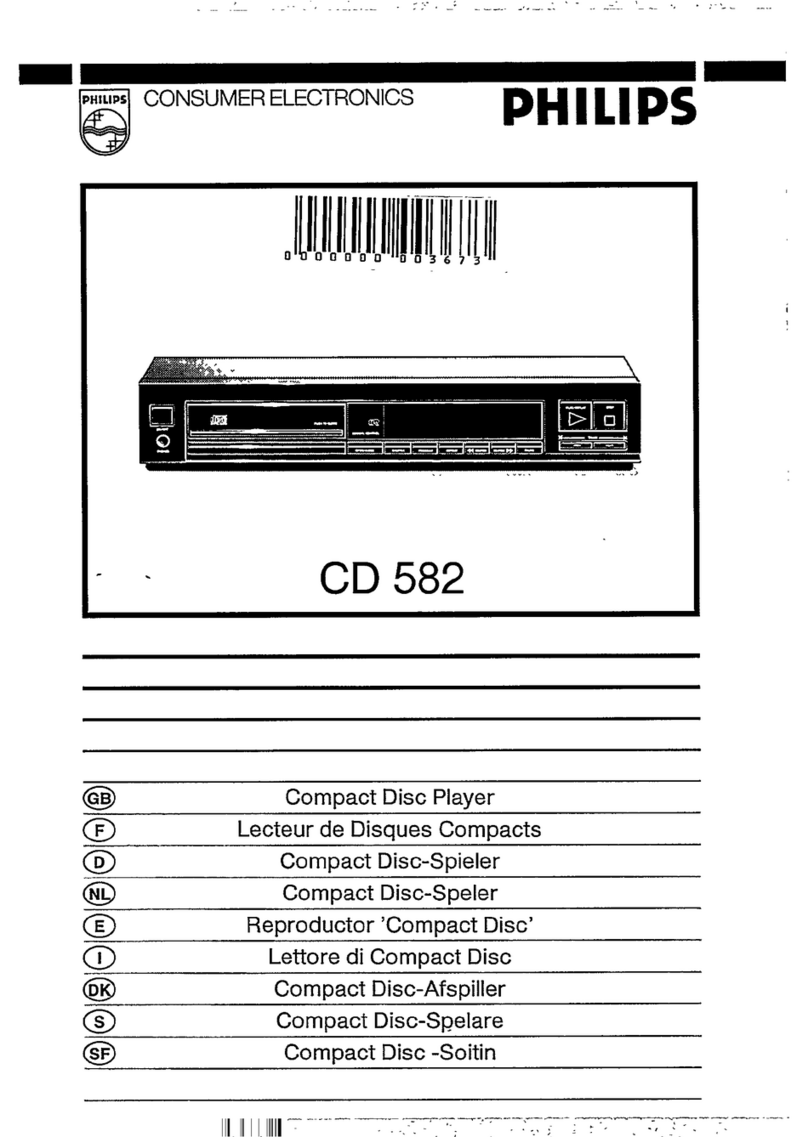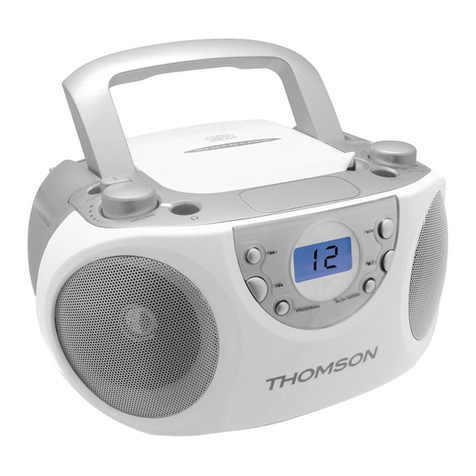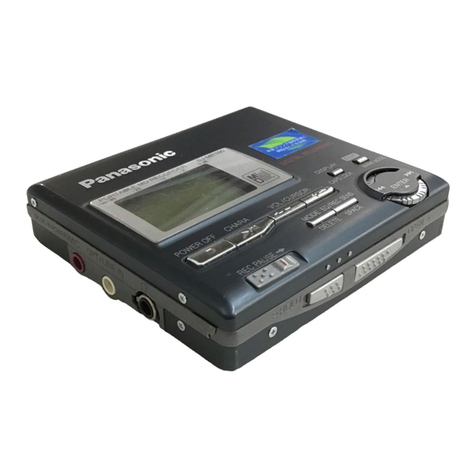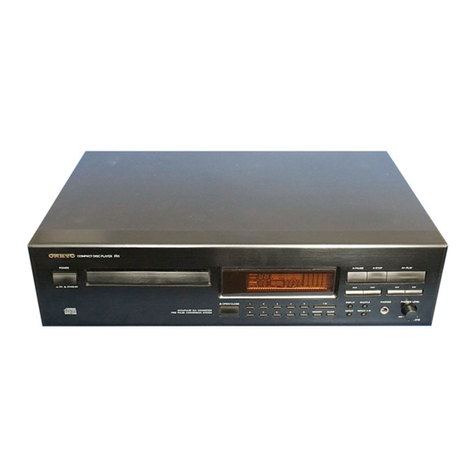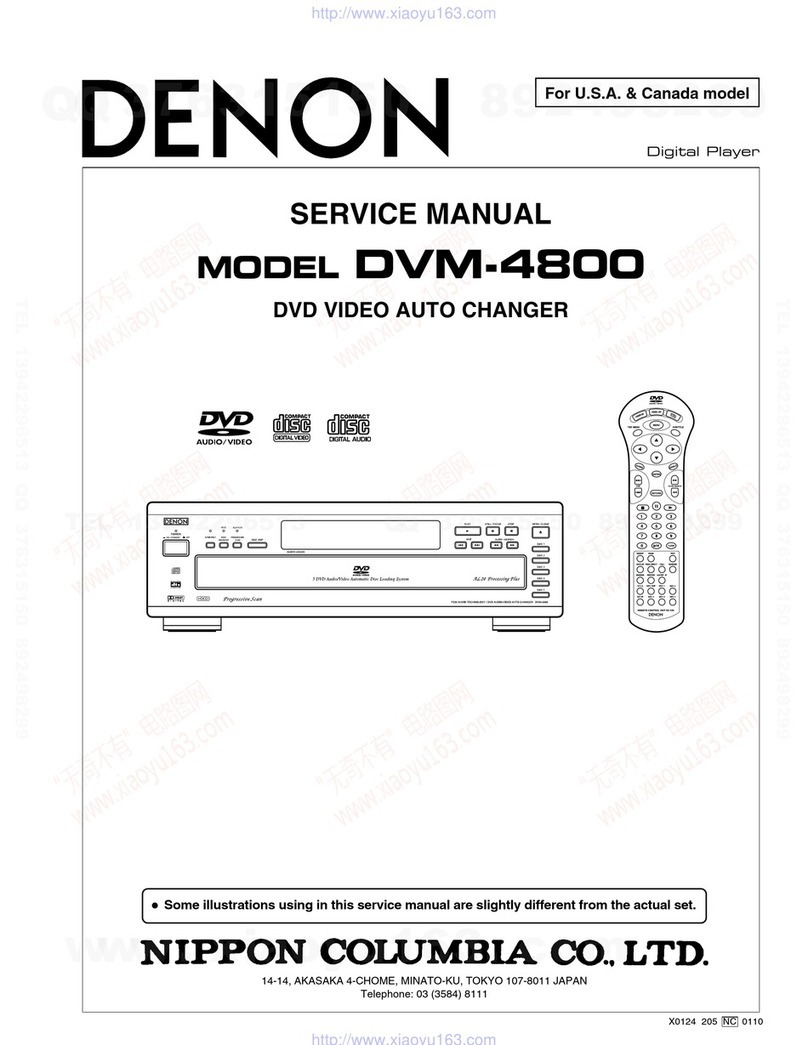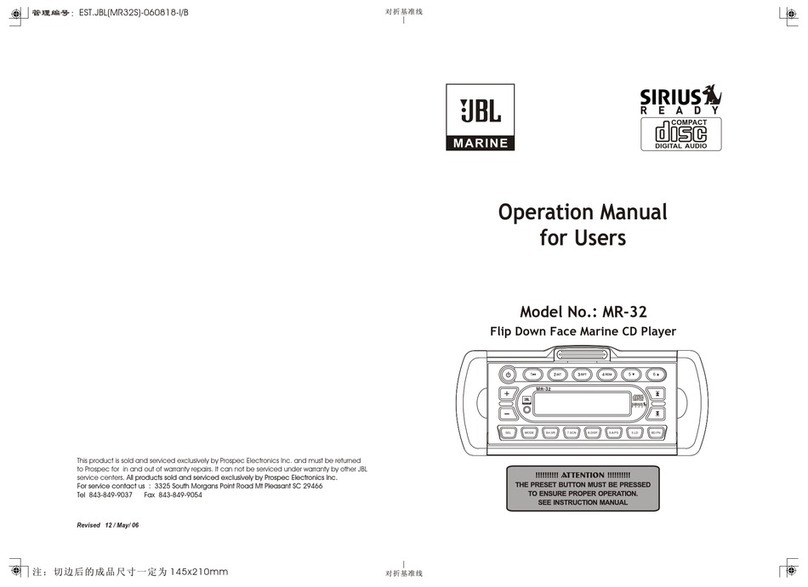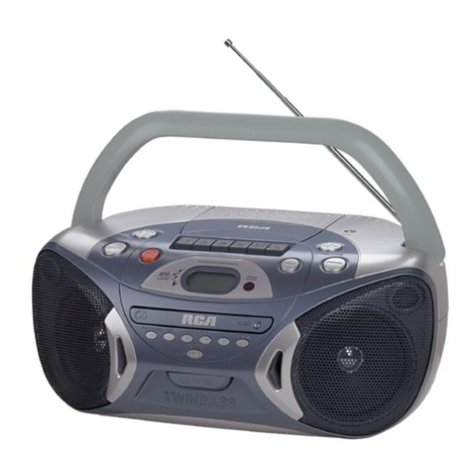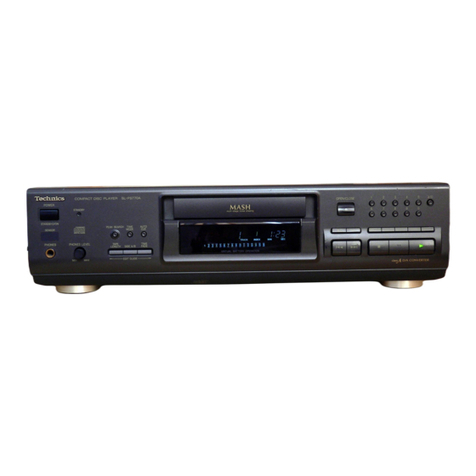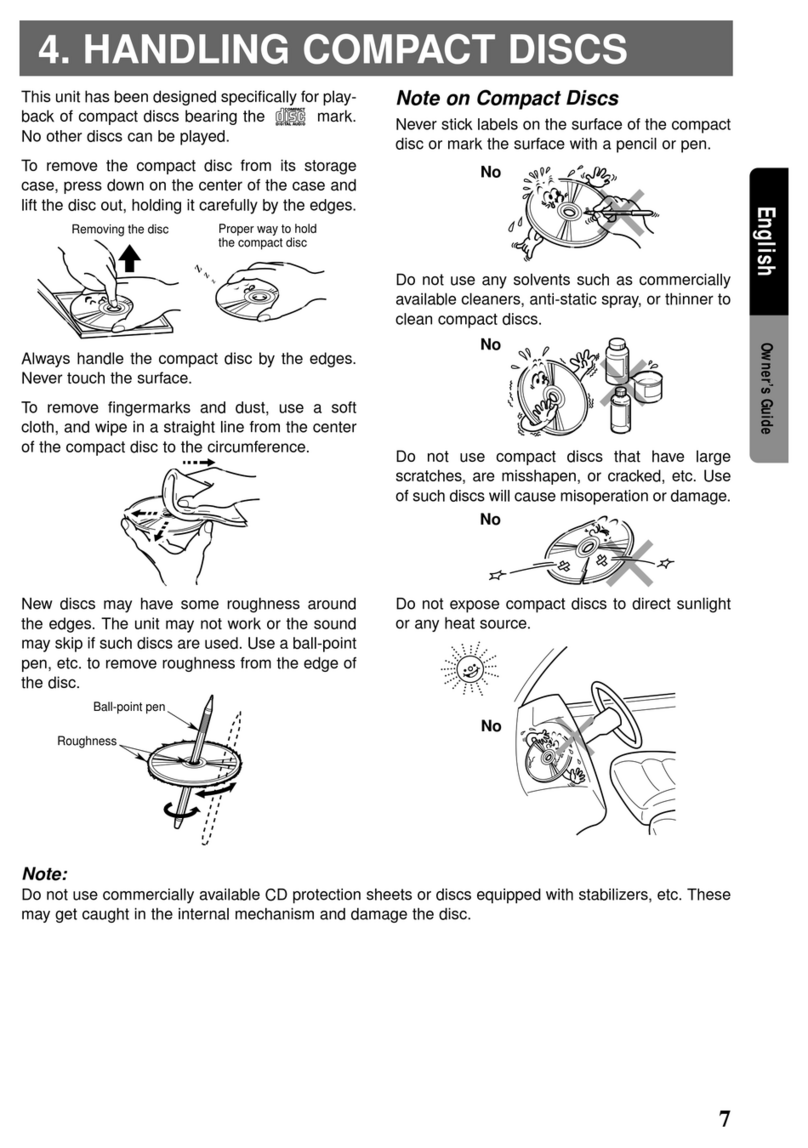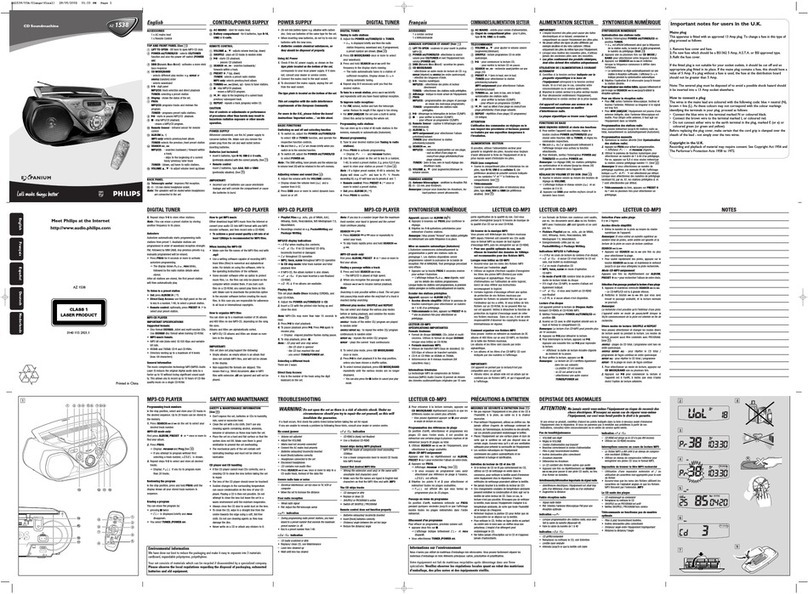
D-99
Power
consumption
2.6
W
OC
Dimensions
Weight
Supplied
accessories
Approx.
130.0
x
31.1
x
142.0
mm
(5'/s
x
1"/s
x
5%/s
in.)
(w/h/d)
not
incl.
Inclined
part
(depth),
projecting
parts
and
controls
Approx.
131.0
x
32.4
x
142.7
mm
(51/4
x
15/6
x
55/e
in.)
(w/h/d)
incl.
projecting
parts
and
controls
Approx.
420
g
(15
0z)
not
incl.
rechargeable
battery
Approx.
500
g
(1
Ib
1
02)
incl.
rechargeable
battery
.
AC
power
adaptor
(1),
Battery
case
(1)
Rechargeable
battery
pack
(1),
Carrying
case
(1)
Connecting
cord
(1)
(stereo
minipiug
+
two
phono
plugs)
Stereo
headphones
(1)
Design
and
specifications
subject
to
change
without
notice.
TABLE
OF
CONTENTS
Section
Title
Page
Specifications
POM
ee
mere
e
errr
eee
eee
eee eee
Hee
ee
ene
eee
eeeneeaeeeeHeeseeesereses
1
Ai:
SGP
NER
IN
exhausts
einccuitendinnn
acta
aatraseeeeauccals
2
2
SERVICING
NOTES.
----:-sscccssssccsccscesssccnsecossscevsescenes
3
Befor
Replacing
the
Optical
Block
COOH
EOE
HREOC
HH
EEO
EOOD
3
Note
on
Laser
Diode
Emission
Checkerrrrsrrrrsessersseeseee
4
Laser
Diode
Check
Procedure
OOO
er
ee
eer
eneeeereenreeesereeneees
4
Service
Mode
(service
program)
rere
rrerrrreeererere
rr
Tere
rrr
yy
4
Explanation
of
Terminals
(IC3801
CXD8178Q)-+rreseeerees
5
3.
ELECTRICAL
ADJUSTMENTS
ere
ee
eer
eres
6
4,
DIAGRAMS
4-1,
Block
Diagrams
Cece
e
eee
ew
erro
rer
ne
neene
eee
eeeeeseeeseeeennenee
9
4-2,
PC
Board/Switch/Motor
Layouts
crrrrrereerseeees
11
4-3,
Semiconductor
Lead
Layouts
rerrrsrsesssseseseseeeens
12
4-4,
Printed
Wiring
Boards
Peo
rer
erreverreree
cere
eerreeererene
14
4-5,
Schematic
Diagrams
OEP
ECTeTOEPrErerrererree
ee
er
rer
ee
rr
yy
19
4-6,
Ic
Block
Diagrams
Pomme
ere mee
re
rreeeeerrerereereessseeeeee
22
5.
EXPLODED
VIEWS
Poe eee
ere
eanen
eer
ee
ee
eeeeeeeesereneeeeseeesees
24
6.
ELECTRICAL
PARTS
LIST
Peererre
errr
eee
er
ere
rere
reer
errr
rr
26
SAFETY-RELATED
COMPONENT
WARNING!!
COMPONENTS
IDENTIFIED
BY
MARK
A
OR
DOTTED
LINE
WITH
MARK A\
ON
THE
SCHEMATIC
DIAGRAMS
AND
IN
THE
PARTS
LIST
ARE
CRITICAL
TO
SAFE
OPERATION.
REPLACE
THESE
COMPONENTS
WITH
SONY
PARTS
WHOSE
PART
NUMBERS
APPEAR
AS
SHOWN
IN
THIS
MANUAL
OR
IN
SUPPLEMENTS
PUB-
LISHED
BY
SONY.
SECTION
1
GENERAL
LOCATION
AND
FUNCTION
OF
CONTROLS
Lens
The
laser
beam
is
emitted
from
this
point
to
pick-up
signal
on
the
disc.
PHONES
(headphones)/REMOTE
jack
Disc
window
Display
window
Normally
the
track
number
and
the
elapsed
playing
time
are
shown.
When
the
power
is
supplied’
through
the
DC
IN
9
V
jack,
the
window
will
light
up.
VOLUME
control
(for
listening
headphones)
ENTER/REMAIN
button
HOLD/RESUME
switch
Slide
this
switch
to
its
rightmost
position.
This
locks
the
buttons
to
prevent
them
from
being
acciden-
tally
pressed
(HOLD
function).
To
resume
disc
play
from
the
point
where
you
last
stopped
the
play,
set
the
switch
to
the
right
or
center
position
(RESUME
function).
KEY
MODE
(AMS*/SEARCH/INDEX)
button
PLAY
MODE
button
*
AMS
is
the
abbreviation
of
Auto
Music
Sensor.
ATTENTION
AU
COMPOSANT
AYANT
RAPPORT
A
LA
SECURITE!
LES
COMPOSANTS
IDENTIFIES
PAR
UNE
MARQUE
/\
SUR
LES
DIAGRAMMES
SCHEMATIQUES
ET
LA
LISTE
DES
PIECES
SONT
CRITIQUES
POUR
LA
SECURITE
DE
FONCTIONNEMENT.
NE
REMPLACER
CES
COM-
POSANTS
QUE
PAR
DES
PIECES
SONY
DONT
LES
NUMEROS
SONT
DONNES
DANS
CE
MANUEL
OU
DANS
LES
SUPPLEMENTS
PUBLIES
PAR
SONY.
